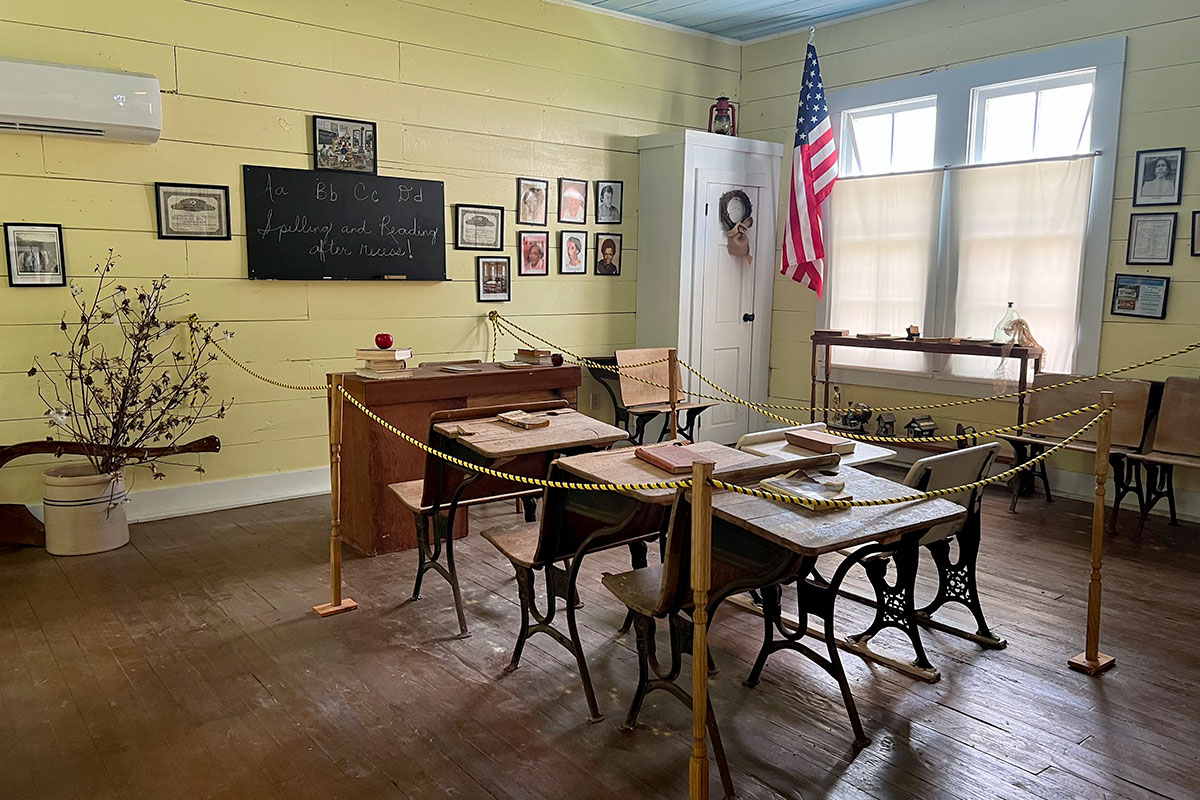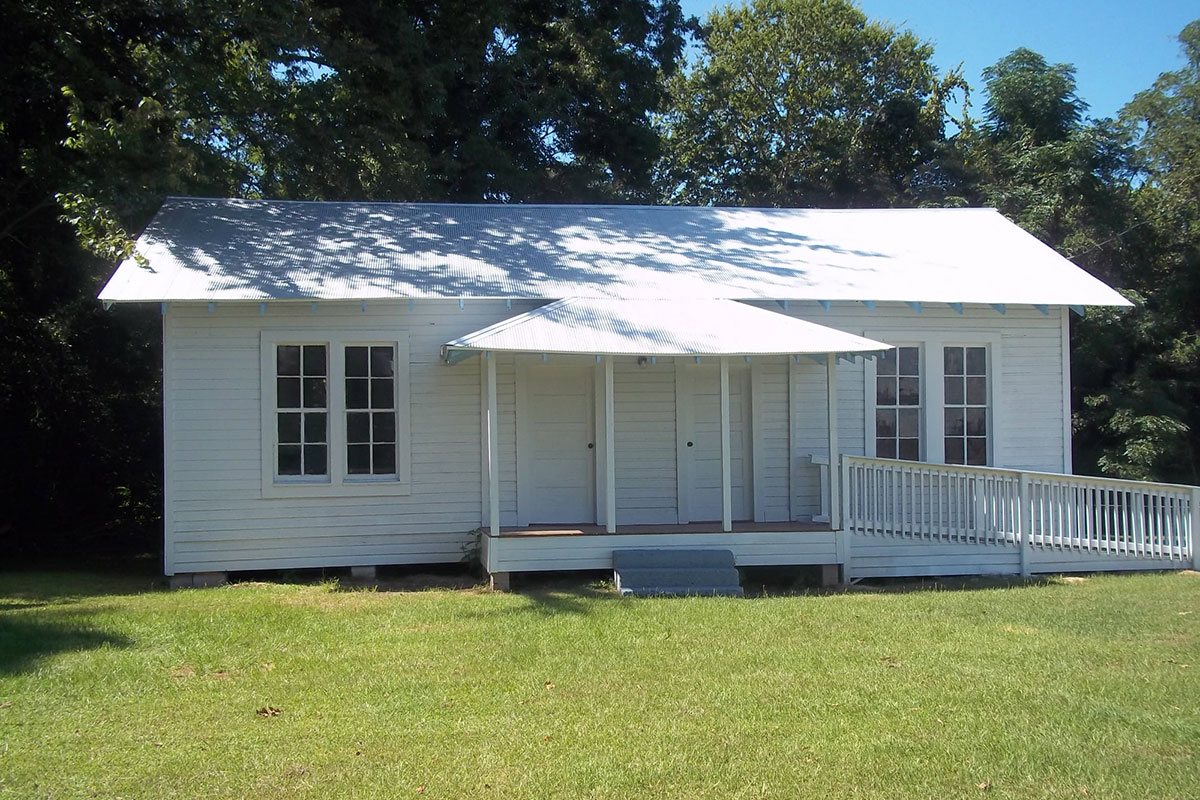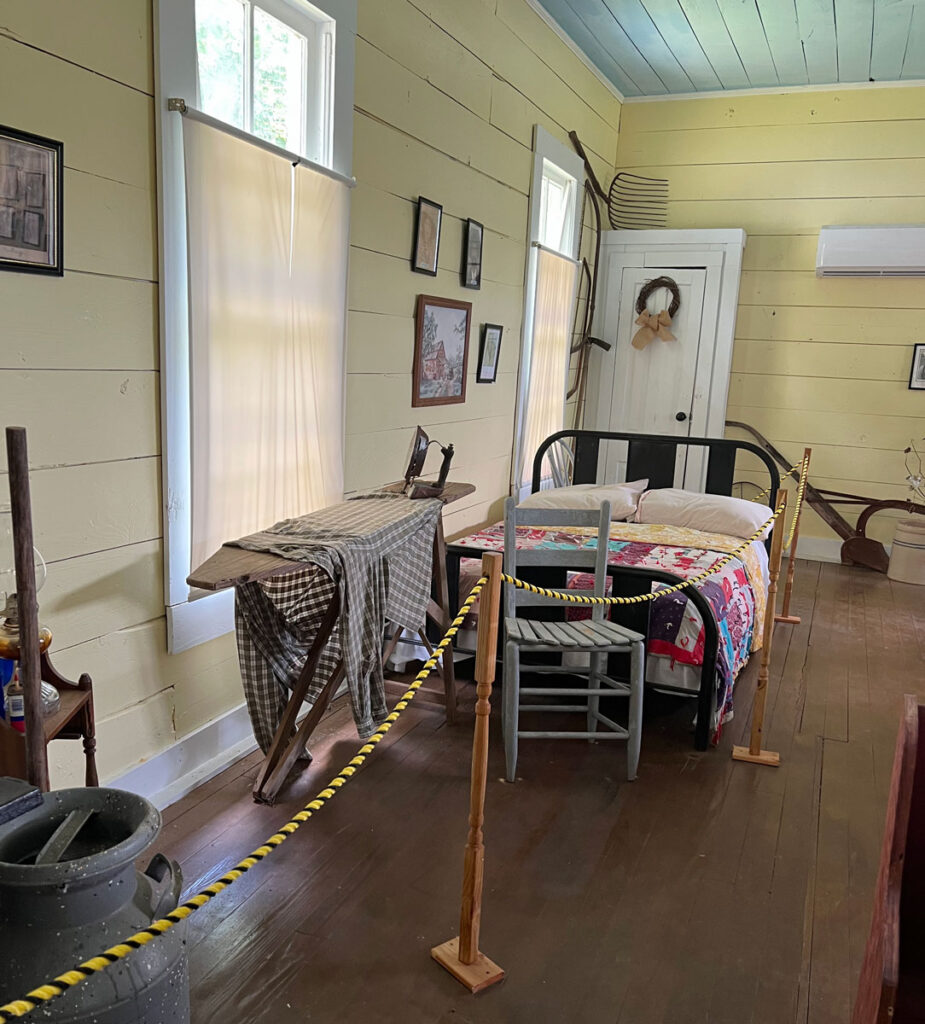Jefferson County, Miss.—The education of Jefferson County’s Black students began before the end of slavery. Although Mississippi law forbade teaching the enslaved to read and write, African Americans all over the state managed in various ways to acquire literacy and then secretly taught others to read and write individually, or in what Freedmen’s Bureau Superintendent of Education John W. Alvord called “native schools.”
As soon as Confederate troops surrendered the lower Mississippi Valley in 1863, freedmen seeking professional and personal improvement filled both the day and evening schools the American Missionary Association established in Natchez and Vicksburg. The staff consisted of white teachers primarily from northern states. They also began to establish their own community schools on plantations like Poplar Hill, a 1,300-acre labor camp planter Samuel Scott (1805-1862) established in 1841 on Coles Creek in Jefferson County.
To Create a Better Future
Slaveholder Samuel Scott was a widower with grandchildren in 1860 when he married Medora Ann Dubbs, 31 years his junior. After his suicide in 1862, the people enslaved at Poplar Hill continued to manage the house and farm for the young widow. Medora Ann remarried in 1867 but became ill and died a year later, stating in her will, “It is my wish that the five acres of land given to the African Church by me shall belong to them as long as the same is used for the purpose of a church site.”
The African Methodist Episcopal Church continuously uses the site, which hosted a school for Black children at Poplar Hill until Mississippi mandated the establishment of public schools for both white and Black children in 1870.
The first public schools in Jefferson County opened in February 1871. The county superintendent noted that because the county had more Black residents than white, more schools were established for Black children, but only one of the six county school directors was Black: Merriman Howard of Fayette, Miss. Howard also served as a trustee of Alcorn University when it opened in 1871, Jefferson County’s representative in the Mississippi legislature from 1870 to 1872, and as county sheriff from 1872 to 1877.
While the Poplar Hill School may have been in operation for many years, the earliest available records show that it was operating in the church building in 1897 under the leadership of three Black trustees: Gibson Starks, John R. Thomas and Scott Hamilton.

The first teacher at Poplar Hill for whom records survive was Elvira Ellis Jackson (1857-1925), the daughter of Isaiah Ellis and Hennie Fitzgerald of the Auburn Plantation in Adams County and wife of Fielding Jackson (1855-1890), born enslaved at Poplar Hill to Delaney and Easter Riley Jackson. How Elvira Ellis Jackson received her initial education is not recorded, but she attended county “normal” (teacher-training) courses offered in the summers. Mississippi teachers took periodic certification exams, and in 1911 her scores enabled her to receive a “second grade” teaching certificate, the second-highest teacher rating possible in that era.
Granddaughter Regina Jackson Ellis would recall her spotless home, the dinners she hosted for students at Alcorn University, her ritual of reading the Bible daily, her impeccable fancy dress, and the dignity and integrity that made her sought-out to solve community disputes and problems. Other family members noted that she saw “teaching moments” in every experience. Because Black teachers’ salaries were so low and school terms so short, Fielding and Elvira Ellis Jackson worked as hands on Delaney Jackson’s farm (50 acres of the original Poplar Hill plantation deeded to him upon Medora Dubbs Scott Butler’s death) and as sharecroppers.
Elvira Ellis Jackson’s dedication to Poplar Hill and her students inspired her oldest daughter Henrietta (1878-1965) to teach there as well for 44 years, from 1896 to 1941. Other known Poplar Hill educators included Mattie Milton, Lethie Green, Bessie Lyas Kates, Virginia Roanne Thomas, Lula Bell Jackson, Alma Page, Ruth Hall, Sarah Hall, Helen Riley, Thelma W. Jackson, Mildred Turner, Sadie Fells, Hattie Belle Haley, Naomi Hill and Elizabeth Jackson. They taught English, literature, history, science, citizenship and mathematics.
Like other Black teachers in rural Mississippi, they also gave lessons on health and hygiene, visited the homes of their students, served as community leaders in club and charity work, organized and participated in school fundraisers, and were responsible for the upkeep and condition of the school and grounds.
Almost a Rosenwald School
Wooden stoves heated rural schools at the turn of the century in Mississippi, and when necessary kerosene lanterns lit them during darker hours of the day. Fire was an ever-present danger, and the wood-frame building built in the 1890s to house the Poplar Hill School burned twice. After the second fire in 1923, Elvira and Henrietta Jackson attempted to convince the Rosenwald Foundation to assist with a replacement two-teacher building.
The product of a partnership between renowned Black educator Booker T. Washington and Sears, Roebuck & Co. President Julius Rosenwald, the Rosenwald Fund offered Black communities funds that totaled about one-third of the cost required to construct a school building, on the condition that the community provide the remaining two-thirds either through cash or donations of labor and building materials.

As recorded in their application, the anticipated cost of the new building would be $1,973 (about $32,000 today). Jefferson County appropriated $215 for the building, the local white community contributed $325, and the local Black community raised $733—essentially a “double tax” on Black residents who already paid property and local taxes. County residents expected the Rosenwald Fund to contribute $700. However, the funds never came.
Between 1923 and 1928, Bura Hilbun, the white Rosenwald agent responsible for administering Rosenwald grants at the Mississippi Department of Education, falsified records of funds intended for certain schools and diverted the money for his personal use. He was convicted of embezzlement in 1931 and served two and a half years of a five-year sentence in the state penitentiary.
Now a Museum
The new Poplar Hill School building, erected in 1923, was a one-story, wood-frame building with a metal roof and drop siding of eight-inch-wide wood planks, measuring 39 by 23 feet. A center partition enabled the interior to be divided into two separate classrooms, and builders added a roofed porch at the front entrance. Double-hung sash windows with wooden frames allowed light and air into the building, and the floor and ceiling were crafted of tongue-and-groove pine planks.
In cold weather, a wooden stove heated the building. A four-inch raised platform at the west end of the building and large blackboards (since removed) enabled all students in the room, seated on long homemade wooden benches, to see the teacher. The building remained in use until the fall of 1957, when Jefferson County consolidated and desegregated its rural schools in compliance with Brown v. Board of Education of Topeka.
From 1957 until the 1970s, local churches and community groups used the building as a meeting space and for community events. Like the forward-thinking early Black teachers who understood the importance of education to Jefferson County’s Black children, former Poplar Hill student Roosevelt Cruel and a group of like-minded local residents understood the value of the rapidly deteriorating but still structurally sound school building to the community and the state. In 2007 Cruel and his colleagues began the time-consuming and challenging process of researching the school’s history and working with historians, preservationists and government officials to ensure that both the school and the stories of those who taught and learned there would be available to future generations.

Craftsmen replaced rotting planks, repaired the leaky roof, replaced the propane heating system installed after the wooden stove’s removal with a modern heat pump, refinished wooden benches and desks, and repainted the interior a cheerful pale yellow. Those working on the construction also restored the original cabinetry to working condition. Community members began collecting representative textbooks, a few library books, and artifacts such as washtubs and bed linens that reflected the realities of rural Black life in Jefferson County of the late 19th and early 20th centuries. They hung photos of former teachers and plaques explaining the school’s history and some of the donated items.
The nonprofit that renovated the school building, the Poplar Hill Museum of African American Culture, aspires to serve Mississippi’s citizens and schoolchildren, as well as tourists to the Natchez area, with a poignant and powerful glimpse into the state’s rural past and into African American life in the late 1800s and early 1900s. The National Register of Historic Places listed the school in March 2010, shortly before the nonprofit formally received its 501c3 status in May 2010, and the school became a Mississippi state landmark in May 2012.
The museum is located on the grounds of the Poplar Hill African Methodist Episcopal Church, five miles northwest of Fayette and 29 miles northeast of Natchez, three miles west of the intersection of Highway 61 and Poplar Hill Road.
Heritage for Future Generations
On the weekend of June 24, 2023, more than one hundred people gathered in Fayette to honor the history of the Poplar Hill School, where for eight decades generations of Black citizens dedicated their time, talent and treasure to create a better future for their children. Student teachers earned their chops in the two-room schoolhouse while Poplar Hill graduates went on to become successful and contributing citizens—farmers and merchants, carpenters and machinists, lawyers and judges, teachers and principals, doctors and nurses, veterans of all branches of the U.S. armed forces, and public officials.
The celebration began with a Friday evening banquet in Fayette’s Prime Health Care Complex. Keynote speaker and museum board member Antoinette Stewart spoke on the school’s history, and East Mt. Olive Missionary Baptist Church (Redlick, Miss.) pastor Tracy Collins enlightened attendees on significant events and persons of Jefferson County in his “Hidden Treasures” presentation.

A candle burned in a memorial tribute to Poplar Hill’s pioneering Black educators, whose known names were read aloud. Julia Brown fed attendees a catered country feast, and several local elected officials offered congratulations and reflections on the Poplar Hill School’s value to the Jefferson County community.
On Saturday at the school site, visitors toured the museum and reconnected with former schoolmates, family members and friends. Local gospel groups Fayette Spiritual Aires, One Man Gang, and Angelic Voices of Praise entertained and uplifted visitors, showcasing Jefferson County’s deep well of musical talent in addition to history and culture. A food truck from CoolCowCream & More, LLC, offered tasty lunch options, refreshments and cold drinks to offset the day’s 90-degree heat.
The celebration closed on Sunday morning at the school and museum with “We’ve Come This Far By Faith,” an interdenominational worship service that Brother Kenneth Coffie, deacon at Locust Grove Missionary Baptist Church; Brother Joseph Cruel, Sr., of the Poplar Hill AME Church; Brother Judy Wyatt, deacon at Hollywood Missionary Baptist Church; and Rev. Marvin Eanos of the Cedar Grove United Methodist Church jointly led.
For additional reading, consider James D. Anderson’s “The Education of Blacks in the South” or Christopher Span’s “From Cotton Field to Schoolhouse: African American Education in Mississippi.” To schedule a visit inside the school and see “a heritage too rich to forget—a legacy revived,” contact Roosevelt or Shirley Cruel.
Read original article by clicking here.

